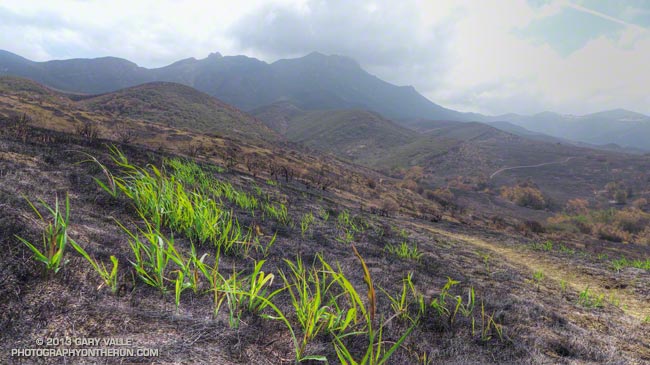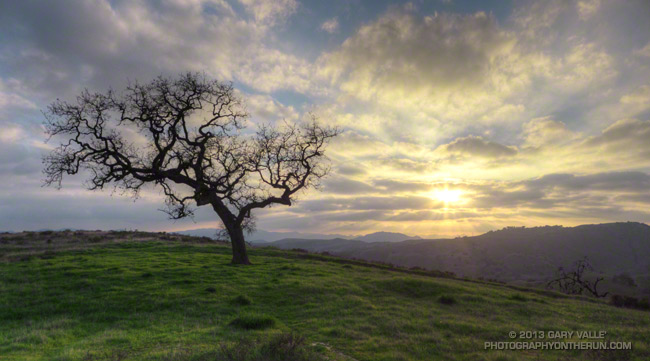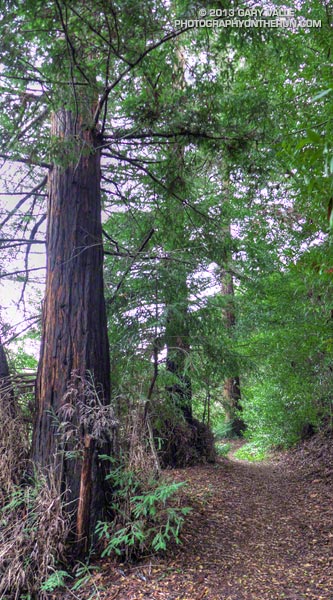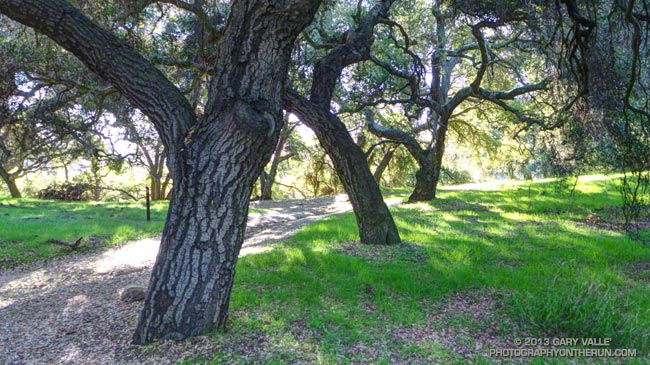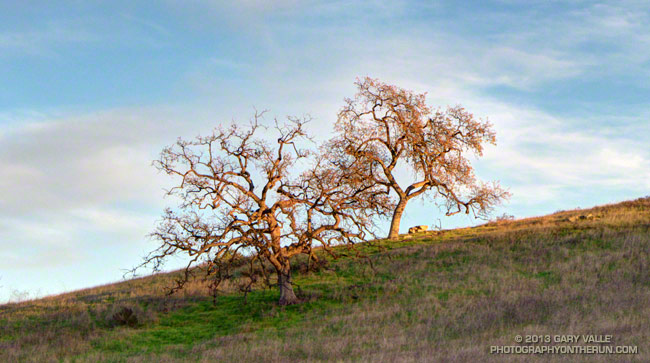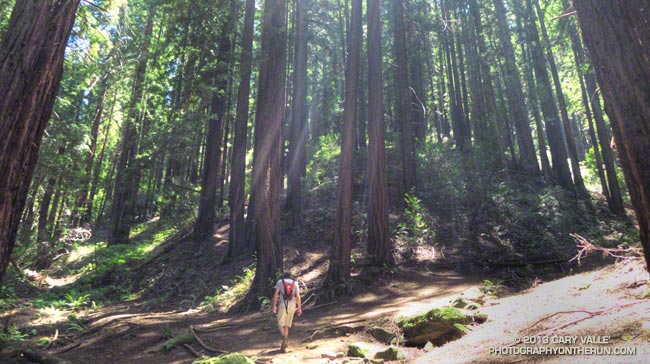
Coast redwoods are spectacular trees, often growing to more than 200 feet tall. They can attain phenomenal size. According to Famous Redwoods, the tallest is the Hyperion tree in Redwood National Park, with a height over 380 feet. The 2021 National Register of Big Trees lists the Lost Monarch in Jedediah Smith Redwoods State Park as the Champion coast redwood. It has a circumference of 950 inches (79.2 feet). There are reports of even larger coast redwoods.
Here’s a Calflora/Google Maps image and live link of the distribution of coast redwoods in California. The southernmost naturally-occurring coast redwoods are in Monterey County, in the Southern Redwood Botanical Area of Los Padres National Forest.
The title photo is of coast redwoods along the French Trail in Oakland’s Redwood Regional Park and is from a hike in mid-May.
Related post: Malibu Creek State Park Coast Redwoods

